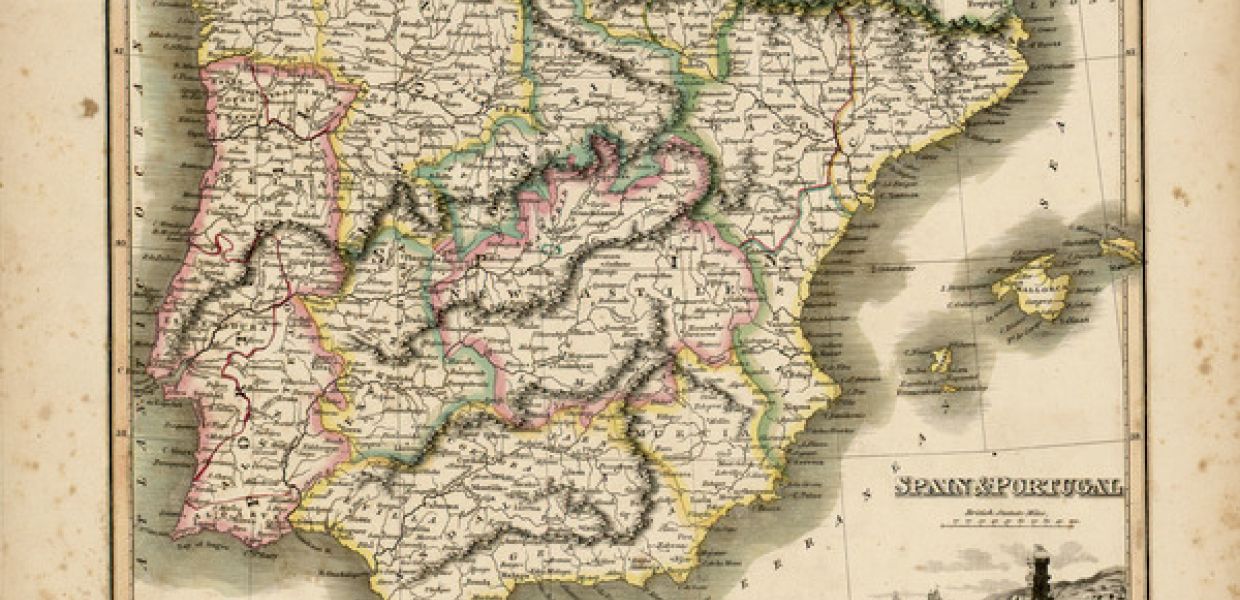Meet the Members Council: Aranzazu Lafuente Urién

Hi, my name is Aranzazu Lafuente Urién. My friends call me Arantxa. I'm Spanish and I’m an archivist, that’s a great combination! I studied Medieval History at university and for the last 20 years, I’ve worked as a civil servant in the Spanish National Archives Administration. I specialize in family and personal archives and spend a lot of time working on describing archives. I also enjoy working with standards and technology developments related to archives.

Spain & Portugal, Biblioteca Digital de Madrid, public domain.
18 years ago, I had the great honour of launching a new institution, the National Nobility Archive, and the good fortune to be its first director. This institution is one of the seven National Archives of Spain. It’s a public archive based in Toledo, holding documents of private origin and great antiquity.
In 2012, I moved to Madrid to work on the APEx project (Archives Portal Europe network of excellence) at the Spanish Portal or Archives (PARES) in the Vice Directorate of State Archives at the Ministry of Education and Culture. I work on the part of the project focused on standards and guidelines.
Today, I am also part of the technical team at PARES, a small but great team working hard to make PARES more interoperable and more responsive using IT developments and new technologies and tools. I lead work on controlled vocabularies and thesauri, standards, ontologies and authority control developments, improvements and other related tasks. Our mission is to provide our archival content to the Archives Portal Europe, thus contributing to the distribution of Europe’s archival heritage.
What do I expect from Europeana? How and what can I contribute to Europeana?
Archives are the cultural institutions that preserve unique and unpublished material describing the history of things like people, places or institutions. The history contained in each of our documents is also an important part of the history of Europe and Europeans. However, archives currently have less visibility than our fellow museums and libraries. Integrating our archives and sharing data with Europeana will help to make our archives more visible. To achieve this objective, I firmly believe that we must, first of all, provide good quality descriptions and images for the documents kept in our archives, using all the tools or enhancements that make them more interoperable. I believe that our commitment to controlled vocabularies and ontologies, in a multilingual world, is one of the best ways to go. I also believe we should try to move towards giving archival descriptions proper context, applying one of the principles of the archives - the principle of provenance.
Archival theory and practice have always recognized the importance of maintaining the context in which documents were produced. The ISAAR-CPF and EAC-CPF are standards sharing a primary aim of formalizing the name of the creator as the primary key for international exchange. This is part of what we call authority control. Today, we see authority control in archives beginning to mature. In future, we will probably see archivists able to share their authority files. Why not share them with Europeana too?
It is our job to look after the history of Europe. That’s why, along with my Members Council colleagues, I would like to try to help Europeana to share documents and archival fonds in context, sharing archival descriptions, good quality images and the information contained therein. That’s why I participate in Europeana and urge all colleagues to work together, integrated in the network of Europeana.
